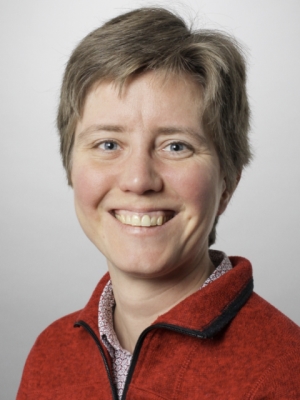When in doubt, aim high

Veerle Sterken had been away from a paid job in cosmic dust science for three years. Then she convinced the European Research Council (ERC) to fund her project on interstellar dust. That kick-started her “second career” in astrophysics and led to her project being welcomed into PlanetS by the board.
“I will send out my application for PlanetS later today”, Veerle Sterken told us in May. Back then, it was not clear whether the board would welcome her project. During the lockdown, we spoke with her about her project and the path that led to PlanetS.
PlanetS: Hi Veerle, how are you coping with the lockdown?
Veerle Sterken: Communicating with people and giving seminars online has been challenging. As a scientist, it helps a lot if you can interact with people and have exchanges with colleagues. Internationally, it doesn’t change a lot, except that most of the meetings have been postponed for a year. I would have preferred to start my ERC grant by interacting with people through these meetings, that would have sped up getting into it. But on the other hand, I will have more results to present next year. But yeah, it does make a difference.
Please tell us a bit about your project!
I am interested in the dynamics of interstellar dust in the heliosphere, which is this “bubble” of solar wind coming from the Sun. Within this bubble, we move through the local interstellar cloud – an area of slightly higher hydrogen density within the nearby region of the galactic interstellar medium. Because of this motion, the dust originating from other stars can pass through the solar system.
What makes the project special?
Normally, astronomers do research on this using telescopes on very long distances. I, however come from a community in Heidelberg, that has been doing in-situ measurements of interplanetary and interstellar dust. Because the particles can pass through the solar system, you can do research on them here, locally, even though they are from other stars. That’s quite unique and very complementary to astronomical research – it’s the only interstellar cloud that we can grasp in-situ.
How do you do that?
There are a few ways in which you can go about it. Either you send a spacecraft that has a dust instrument on board that can measure mass, direction and velocity of particles upon impact, and even the dust composition. Or you can collect samples and return them to Earth, like for example the Stardust mission did.
What questions do you hope to answer with your work?
The idea of my project is to study how the dust trajectory is affected by the heliosphere. There are several influences: You have the force from the solar radiation pressure, the gravity and you have the Lorentz force, because these particles are charged and moving through the Interplanetary Magnetic Field which depends on the solar cycle. With the solar cycle of 11 years, the moving dust will focus and defocus relative to the solar equatorial plane every other 11 years. This mechanism of focusing and defocusing has been more or less understood with the help of measurements taken by Ulysses. But the entire series of measurements taken together have not. Either the first half or the second half of the dataset could be explained, but not all together. So, it seems like there is a second modulation, which is something that needs to be proven.
Do you have any idea what that could be?
The hypothesis behind my project is that the heliosphere boundary region could cause such a second modulation. The goal is to model the trajectories of the dust and see if we can match the simulation with the data. If we are successful, we can also constrain the particle properties like the composition and structure.
That sounds fascinating. Why did you choose to do this work at ETH?
I lived in Switzerland already, so I checked who was doing research on the heliosphere here. I found the website of Arnold Benz. He is a Professor emeritus who worked on the heliosphere in the past and I thought his research was the closest to my field. I wrote him an email and he advised me to get in touch with Hans-Martin Schmid, which I did. That’s how I ended up in Zurich.
The ERC grant was crucial. How did you make that happen?
It wasn’t easy, as I had been away from a paid job in cosmic dust science for 3 years. Many of the people I had to compete with for the ERC grant were already professors. I, on the other hand, had been unemployed and frustrated (laughs). I worked hard to present a good project, first written and then defended it to a jury in Brussels, and I succeeded to get the grant. So, it’s good to see that the ERC gives good ideas a chance. That could give young people hope. Never give up!
Indeed. Best of luck for your project and thanks for your time!
Thanks!

